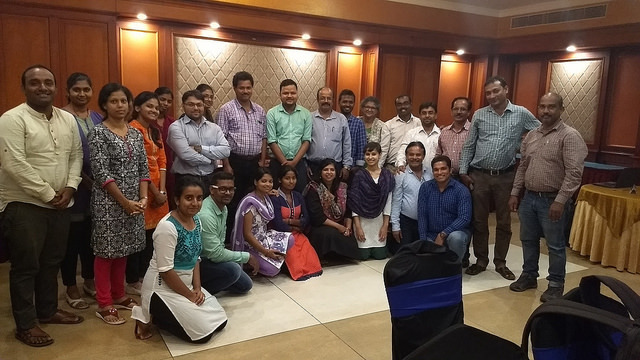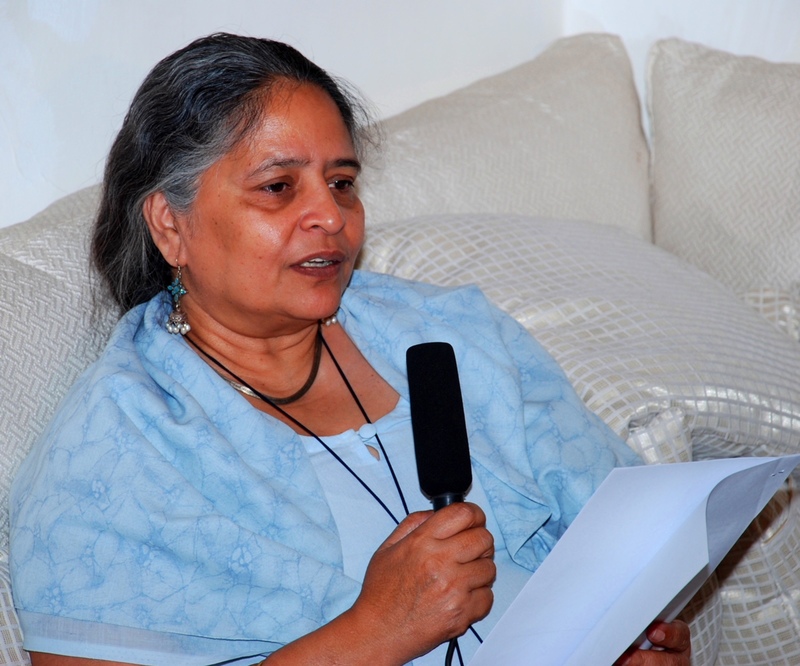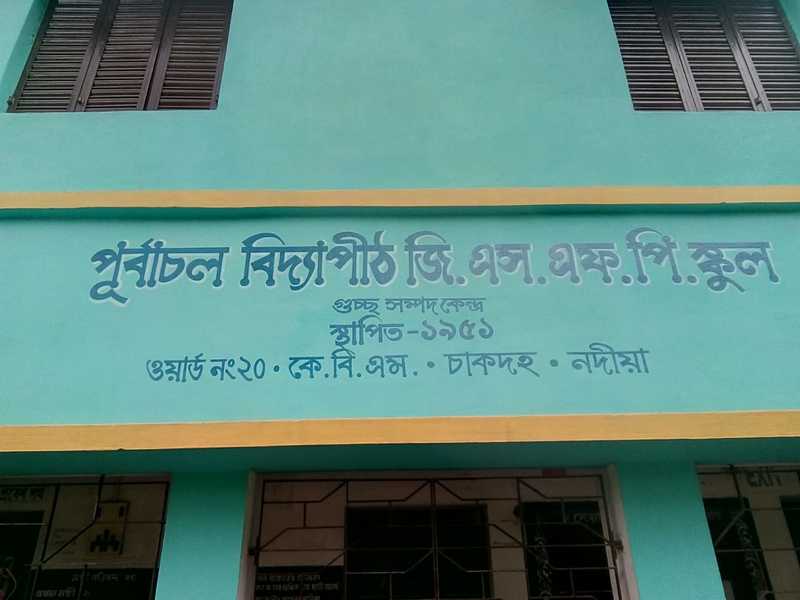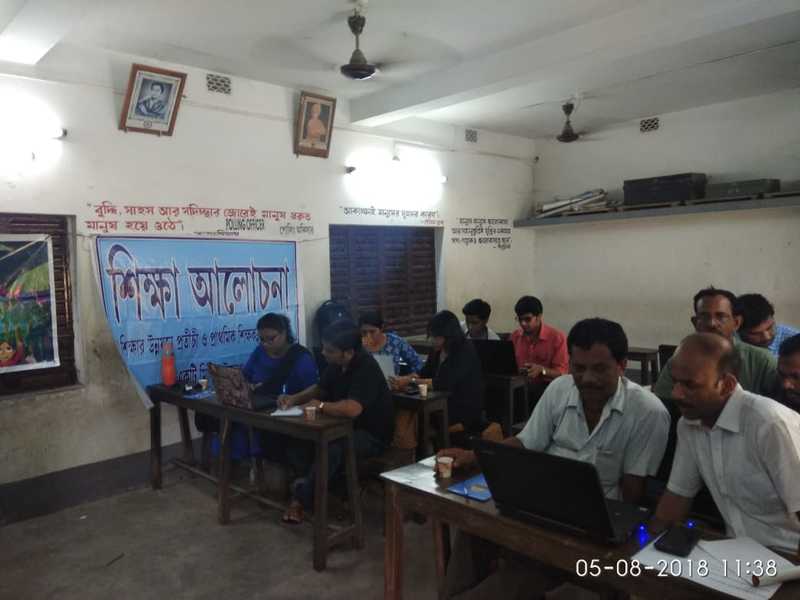Workshop Announcement: Reading with StoryWeaver in Namma Bengaluru
Posted by Remya Padmadas on August 30, 2018StoryWeaver invites educators and resource people from organisations to attend a workshop to be held in Bengaluru on 6th and 11th September in Koramangala. Participants will gain an understanding of how to use StoryWeaver with the children they work with. This includes how to:
-
Browse, read & curate a reading list from over 9000 stories across 118 languages
-
Download stories for offline reading
-
Create a new story or a set of flashcards from an image bank of over 11000 illustrations
- Re-Level / Re-Mix a story to suit your child's needs
- Translate stories to a language of your choice
And best of all, ALL of this is absolutely FREE!
To celebrate language diversity, we are planning to conduct the workshop session in English on the 6th and in Kannada on the 11th. You are requested to give your preference for the date/language while signing up. However, just in case we are not able to attract enough participatio
The workshop would cover the following:-
- A demonstration of StoryWeaver and the platform's key functionalities
- Examples of how educators are using StoryWeaver effectively in their classrooms
- Dedicated work time for participants to try their hands on StoryWeaver
- An opportunity to meet other educators and have interesting conversations

Participants at a recent StoryWeaver workshop.
If this excites you, REGISTER HERE to book your place in the workshop, latest by 3rd September, Monday.
Please note that the seats are limited and we might not be able to accommodate more than 2-3 people per organization. Confirmed participants will get a separate email confirming their participation and other logistical details.
The workshop will be held between 10 a.m to 4.30 p.m and there is no fee to attend the workshop.
Feel free to reach out with any questions to Khyati at [email protected].
comments (3)The accidental translator
Posted by Remya Padmadas on September 30, 2017September 30th is celebrated around the world as International Translation Day. We're very fortunate that some of our wonderful translators and language reviewers shared their thoughts on translation with us on this occasion.
Madhu B. Joshi prefers to be known as a communication practitioner. She sees a great need for demystification in daily life and has been trying to work towards it. She has taught translation and a short, self-designed course of Indian Culture; mentored content teams of major education NGOs and designed educational audio-video programmes for CIET, NCERT. Joshi is a translator of Hindi poetry and short fiction in English and has presented major black feminist writers in Hindi. She is also a prolific and visionary collaborator of StoryWeaver. All of this, and we also know and love the other मधु बी. जोशी (in her own words)... जो खाना पकाना, इलाज करना, पौधे और कुत्ते पालना, राय देना.. जैसे बहुत से मुफ़्त काम करती हैं। उन्हें सब से ज़्यादा मज़ा बच्चों के लिए काम करने में आता है और वह इसका कोई मौका नहीं चूकतीं।

My interest in translation is the result of two socio-political accidents. A very courageous father and a supportive family allowed me to turn crisis into opportunities; I shudder at the thought of my contemporaries who suffered what I did.
I was in school in Delhi. Teaching science in Hindi in Government run schools was high on the agenda of the government at that time. In 1969, when I needed to choose the medium of instruction as a science student, coming from the hardcore Hindi-Hindustani following family, I chose Hindi over English. I had been educated in Hindi Medium government schools, most of my English came from my father, an ex-Royal Navy man in rough circumstances he had never expected to be in.
In earnest I (and hundreds of thousands other Delhi students) began to study science subjects in Hindi. The catch was, except for about three volumes of Biology books published by the NCERT, there were few CBSE syllabus compatible science textbooks available in Hindi. I remember our maths, chemistry and physics teachers who had studied in UP and Madhya Pradesh recommending some books that were compatible with the Intermediate/Secondary Board syllabi of those states; we supplemented that list with available books in English. As a result, we ended up reading in English and writing our answers in Hindi.
I had a good command of written and spoken English and Hindi, still my grades fell. I passed my Higher Secondary exam with not exactly flying colours. But I had unwittingly acquired translation skills and a deep respect for, and interest in facilitating communication.
Years earlier, seeing my interest in singing, my closet music-lover father sent me to the neighbourhood aunties who taught music and dance to about a dozen Bengali girls. The aunties were shocked to see a Garhwali girl wishing to be their student. In that gormint clony of Dilli, whoever had heard of a Garhwali girl wishing to sing? They refused point blank, “we only teach Bengali girls.” That was the end of my music dream. In school, the dumbest of children chose music and art as subjects. There was no other music education available in the vicinity. I followed the only course available to me - AIR was giving so much music for free, I learnt my music from Manna Dey, Mohammad Rafi, Malika Pukhraj, Begum Akhtar, Asa Singh Mastana, Salil Chowdhury, Madanmohan......
Much later I guessed the good aunties had not been able to communicate that they only taught Raubeendro Shaungeet which no one else in our colony showed the least interest in. I am sure they would have taught me just as well as they taught the rest of their students had they only known I wished to learn music irrespective of the brand.
These two incidents made sure I did a certain amount of translation besides other things.
Be the first to comment.
A peek inside a StoryWeaver workshop in Nadia, West Bengal
Posted by Remya Padmadas on October 01, 2018Earlier this year, StoryWeaver conducted a Bengali Translation Hackathon with a group of enthusiastic teachers and language students. The hackathon saw over 70 level 1 and 2 stories translated to Bengali and reviewed.
The participants were excited by the possibilities the StoryWeaver platform afforded and left the hackathon with many ideas on how they could use it in their work with children.
Participants, Anupam Dam and Suman Das, was particularly excited by StoryWeaver, and wanted to introduce it to students and also to teachers. He wrote back to us soon after the hackathon with the idea of conducting a StoryWeaver workshop for some of the teachers in his school.

Anupam is a a government aided school teacher and is keen to provide his students with the best possible facilities and resources. Suman Das is a Head Master Of Chalitatali Prathamik Vidyalaya of Nadia District.
“I wanted to arrange the workshop to spread awareness among teachers like me about the vast scope of using StoryWeaver in the classroom” Anupam shared. “All the participants chosen to attend the workshop were equally dedicated towards education.”

Team StoryWeaver had shared a suggested schedule for the workshop. “This helped the workshop go as planned, from the introduction stage to final publishing of stories.” recalls Suman.
The workshop facilitators were pleased to notice that participants willingly involved themselves in the workshop and performed the tasks asked of them flawlessly. They had very few queries, and the most frequently asked question was "Is it possible to edit already published stories?"
“My colleagues were engaged throughout the workshop and enjoyed it the most when the saw their stories published on the StoryWeaver platform, ” added Suman.
Sudeshna Moitra, our Bengali Consultant Language Editor, was an observer at the workshop and had this to say about the experience: “Yesterday’s workshop was very enriching for me. All the fellow teachers were quick to grasp the concept and participated equally and intelligently. Their enthusiasm to learn and know more made the workshop quite fulfilling. Had a great experience from my side as well. I enjoyed the opportunity to interact with a group of interesting minds and hope to do similar workshops more. It feels great to conduct such workshops and the feedback from them was wonderful. Hope I have managed to contribute something meaningful to them through the workshop.
The workshop ended with teachers discussing ways in which they could use StoryWeaver in the classroom environment and sharing their takeaways from the session. Some of them were happy to have learned a new way to share stories with students and planned to ‘create stories based on school syllabus’ while others were happy to have the opportunity to create and translate stories in their mother tongue.

We look forward to seeing more teachers conducting StoryWeaver workshops in their schools. If you’re interested in introducing StoryWeaver to your peers and in your classrooms, write to us at [email protected] today.